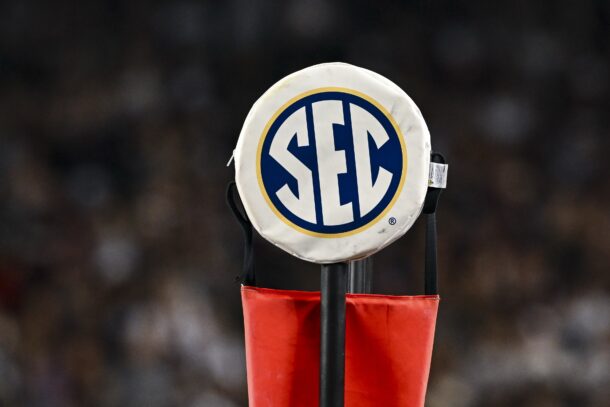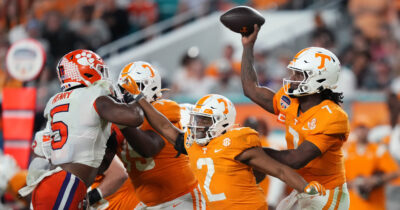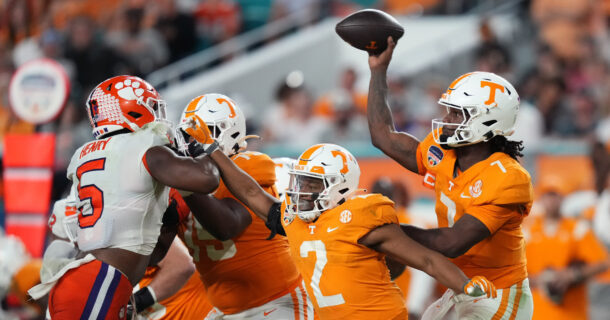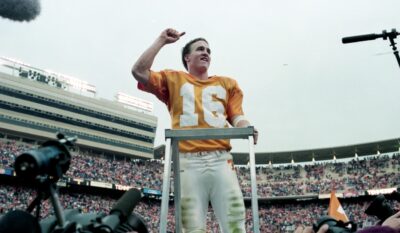Impactful Coaching Moves: The best and worst decisions from Week 6
By Ethan Levine
Published:
The SEC kept things in-house last weekend, as all 12 teams in action took on fellow SEC members in a fantastic slate of games. The state of Mississippi is still recovering from its greatest weekend ever, Kentucky all of a sudden appears to be a player in the East, and traditional powers Florida and Tennessee showed just how far the mighty have fallen.
As is the case most weeks, a few head coaching decisions in each game separated the winners from the losers, and those coaching decisions are about to be picked apart, for better or for worse.
Here are the best and worst coaching decisions from around the SEC in Week 6:
Good Move
Mark Stoops used tailback Jojo Kemp as his “wildcat” quarterback to run out the clock in a win over Vanderbilt two weeks ago, and trailing by 14 in the fourth quarter against South Carolina he went back to Kemp, riding the sophomore to a huge victory for the Kentucky program. In a situation where most teams would have gone pass-happy, especially teams running an Air Raid offense, Stoops and offensive coordinator Neal Brown trusted in their star tailback and were rewarded for their faith and gutsy decision-making. Kemp rushed the ball 11 times for 111 yards and two touchdown on back-to-back scoring drives to tie the game late in the fourth quarter, setting up Bud Dupree’s game-winning pick-six. You read that right — Kentucky allowed a tailback to take 11 direct snaps while trailing in the fourth quarter, and gained 111 yards and two scores in doing so. Stoops saw a strength in his offense and a weakness in the South Carolina defense, and exploited the mismatch like any top-flight head coach would. It was a great call to feed Kemp with the game on the line, and the Cats are now in great position to make a run at an East division crown.
Bad Move
In that same game between South Carolina and Kentucky, Steve Spurrier made a series of questionable decisions, choosing to throw the ball in the fourth quarter with a 14-point lead. Those decisions allowed Kentucky the opportunity to climb back into striking distance, which is exactly what UK did. In a peculiar turn of events, South Carolina actually threw the ball 10 times in the final quarter despite leading for most of it, while Kentucky threw just one pass in mounting its biggest fourth quarter comeback in school history. Mike Davis ran for 144 yards in the game’s first three quarters, but Spurrier gave him the ball just twice in the fourth quarter when trying to preserve a lead. Davis ran for 39 total yards on those two carries, but Spurrier still neglected to use his best offensive weapon in a time perfectly suited to ride him to victory. There’s no excuse for the way South Carolina blew its lead to Kentucky, and Spurrier’s poor playcalling in the final quarter is the biggest reason for the Gamecocks defeat.
Good Move
The move is clouded a bit by Monday’s news regarding Treon Harris’ legal troubles, but Will Muschamp’s move to replace the struggling Jeff Driskel with Harris under center saved the Gators from an embarrassing loss. The game was still embarrassing, but at least Florida won. Driskel has been a punchline all season, and he was a putrid 11 of 23 passing for 59 yards with three interceptions against Tennessee. For context’s sake, he was an even worse 9 of 28 passing for 93 yards against Alabama in his previous outing. Harris came into the game in the second half and brought new life to the Gators offense. He led the team right down the field for the only touchdown of the game by either side on his first drive of the game. He also led Florida’s other scoring drive, culminating in what would be a game-winning field goal by Austin Hardin. The Gators are going to have to go back to Driskel at quarterback this weekend as the Harris saga continues off the field, but for one week Muschamp finally pulled the trigger on a move that won his team a game.
Bad Move
Hindsight is 20-20, but Nick Saban and Lane Kiffin may have made a mistake in taking a shot to the end zone late in Alabama’s loss to Ole Miss on Saturday. The Tide trailed by six points in the final minute of the game, but had effortlessly marched down the field to inside the Ole Miss 40, and seemed to still have plenty of time to continue driving before risking it all with a shot to the end zone (about 45 seconds on the clock). Alabama quarterback Blake Sims threw a jump ball to tight end O.J. Howard that was intercepted by the Rebels’ Senquez Golson to clinch an Ole Miss victory, but the Tide should have continued working the ball down the field gradually, saving the shot to the end zone for a better moment. Had Alabama been able to move the ball to the red zone, even the fringe of the red zone, it would have opened up the playbook in trying to score a game-winning touchdown. Instead, Alabama risked it all on one pla, and came up on the losing end of the play and the game. Nick Saban has forgotten more about coaching than most will know in a lifetime, but he and Kiffin may have made a fatal error on the final drive of the game.
A former newspaper reporter who has roamed the southeastern United States for years covering football and eating way too many barbecue ribs, if there is such a thing.







